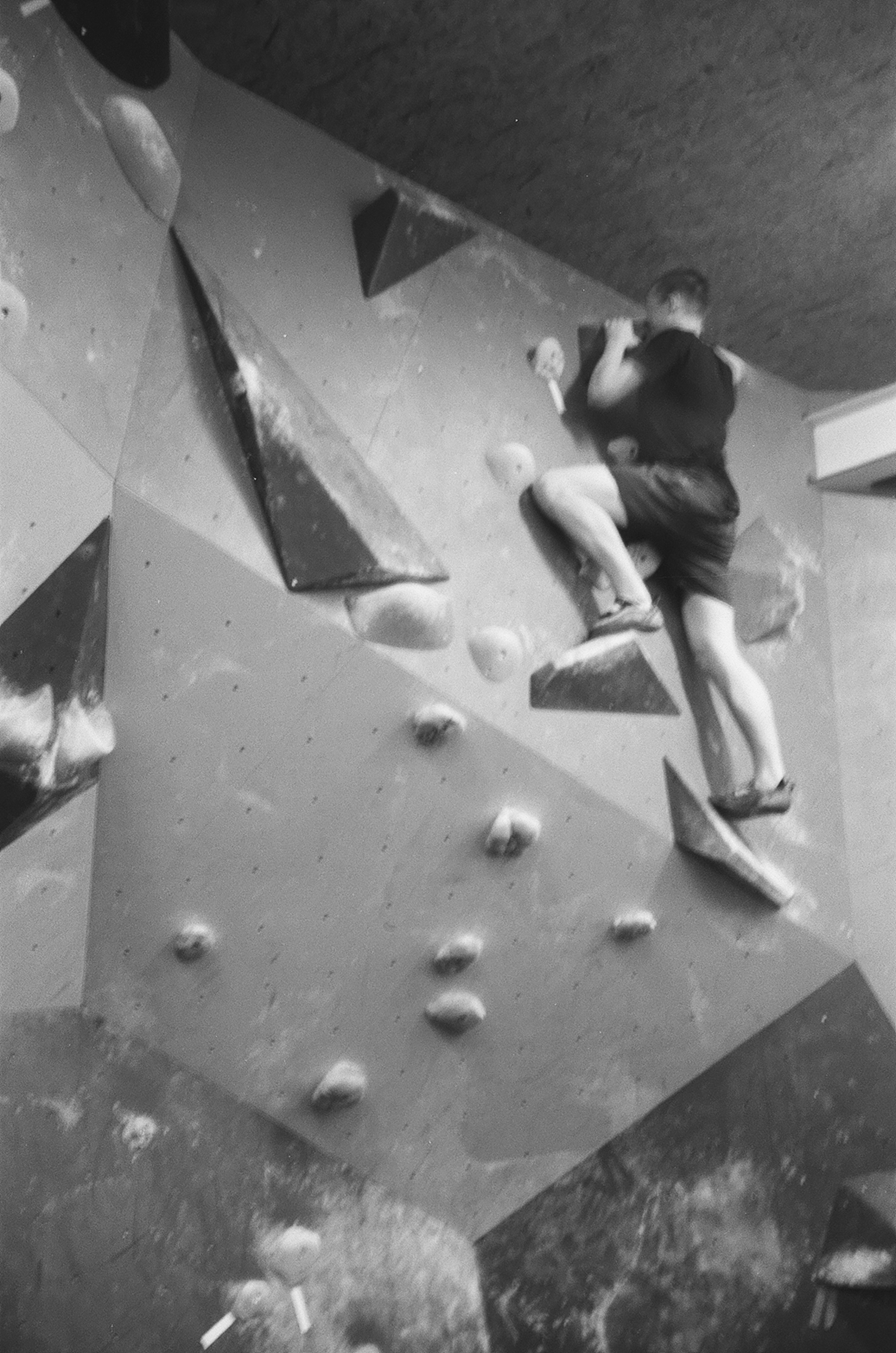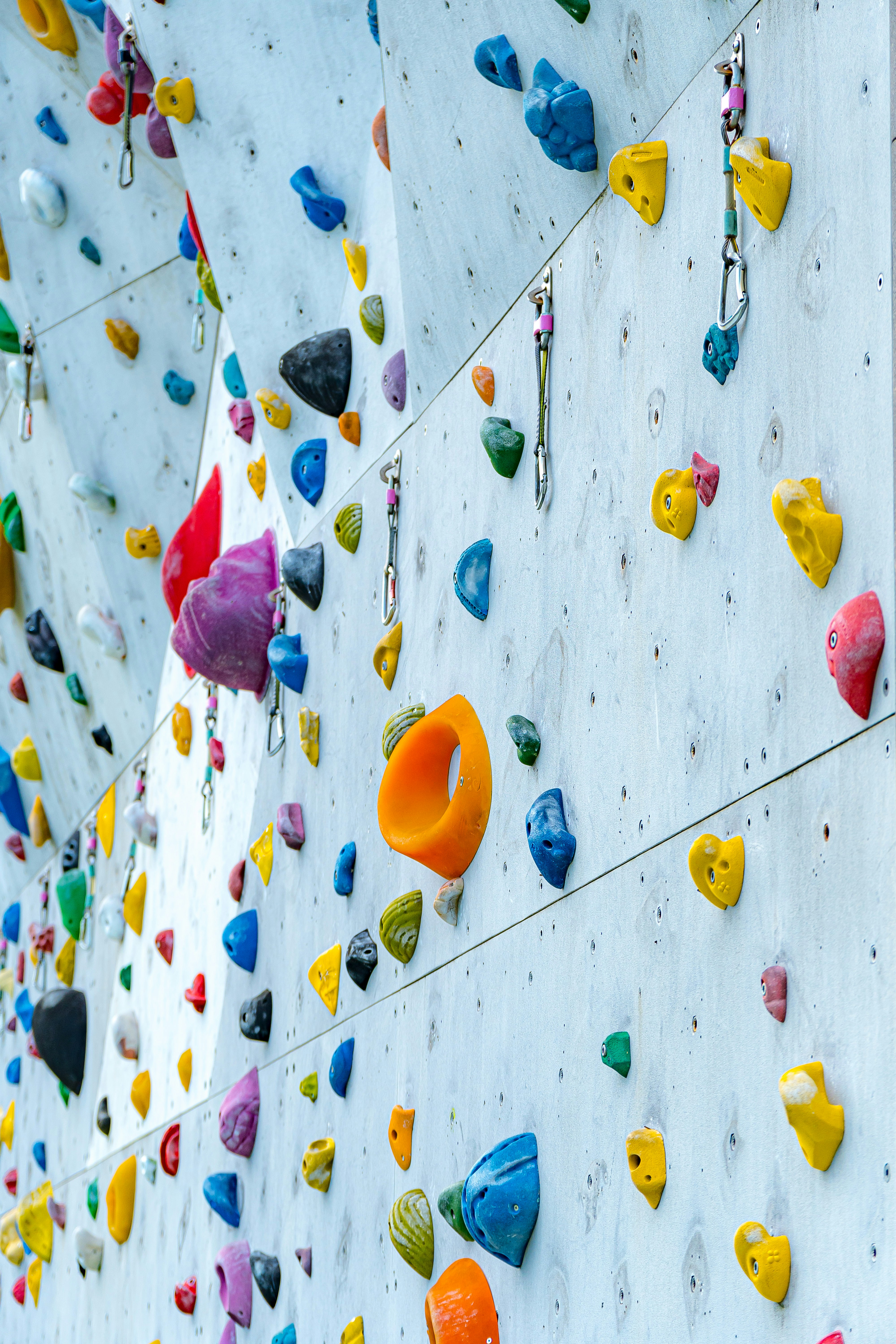The 2025 IFSC World Championships in Seoul are happening right now, and today marks a crucial day - boulder qualifications for both men and women. As we watch the world's best climbers decode incredibly complex problems in real-time, we're seeing route reading mastery at its finest. But here's what most people miss when they watch championship-level climbing: the real battle isn't against the wall, it's against the problem itself.
Every elite climber stepping onto those walls in Seoul has spent years perfecting not just their physical abilities, but their capacity to read routes under pressure. The difference between making finals and going home early often comes down to those crucial moments of analysis before the first move.
What we're witnessing in Seoul this week offers incredible insights into how route reading works at the highest level, and more importantly, how you can apply these same principles whether you're tackling your first local competition or chasing your own championship dreams.
The Seoul Factor: What's Making These Routes Different
Seoul's route setters are throwing some serious curveballs this week, and watching the world's best climbers navigate these challenges is revealing just how sophisticated modern route reading has become. The problems aren't just physically demanding - they're mental puzzles that require climbers to think several moves ahead while managing their energy and time efficiently.
What struck me most about the championship routes was how they rewarded patience and systematic thinking over raw athleticism. Sure, you needed to be incredibly strong to compete at this level, but the climbers who succeeded were those who could break down complex sequences into manageable chunks and identify the most efficient path through each section.
The lead routes in particular showcased something we're seeing more of in modern competition setting - sequences that look impossible from the ground but reveal elegant solutions once you identify the key insight. This isn't accidental. Route setters are deliberately creating problems that separate good route readers from great ones.
How Elite Climbers Actually Read Routes
Watching championship climbers work through their observation time reveals a systematic approach that's completely different from how most of us read problems in our local gyms. They're not just looking at individual holds - they're mapping entire sequences, identifying rest positions, and calculating energy expenditure for different sections of the route.
The first thing elite climbers do is identify the crux sections. But here's where it gets interesting - they don't just look for the hardest moves. They're identifying the sections where route reading will be most critical, where a wrong choice could end their attempt, or where they'll need to make split-second decisions under fatigue.
They spend significant time visualizing their body positions throughout the entire route. You can actually see this if you watch closely - they'll move their hands and shoulders subtly, mentally rehearsing the rotation needed for a particular move or the way they'll position their hips for a specific sequence. This physical rehearsal creates muscle memory before they ever touch the wall.
Elite climbers also have an incredible ability to identify alternative solutions quickly. They're not just finding one way through a sequence - they're cataloging backup options for when their primary plan doesn't work. This mental flexibility is what allows them to adapt mid-climb when they encounter unexpected difficulties.
The Art of Sequential Thinking
One of the most impressive aspects of championship-level route reading is how climbers think in sequences rather than individual moves. They're not looking at each hold in isolation - they're identifying logical groupings of moves that form coherent units, then figuring out how these units connect together.
This sequential thinking becomes crucial on the longer lead routes where memorizing every single move would be impossible. Instead, elite climbers break the route into chunks - maybe the opening sequence to the first rest, then the technical section through the bulge, then the endurance crux to the chains. Each chunk gets its own mini-strategy.
What's fascinating is how they use rhythm and flow to tie these sequences together. The best route readers aren't just planning what they'll do with their hands - they're choreographing their entire body movement through the route. They understand that climbing efficiently means maintaining momentum where possible and only stopping where absolutely necessary.
Reading Under Pressure: The Championship Difference
Here's where championship climbing gets really interesting - elite climbers have to read routes while managing enormous pressure, fatigue, and time constraints. The route reading skills that work perfectly in training have to function under completely different psychological conditions.
Championship climbers develop what I call "pressure-resistant reading" - the ability to maintain analytical thinking even when their nervous system is flooded with adrenaline. They practice this deliberately, putting themselves in high-pressure situations during training where they have to read and execute difficult problems with stakes attached.
They also understand that their route reading changes throughout a competition. Fresh legs in qualifications allow for different strategic choices than tired muscles in finals. Elite climbers adjust their reading approach based on their physical and mental state, sometimes choosing more conservative lines when they're fatigued or more aggressive approaches when they need to make up ground.
The time pressure in championships adds another layer of complexity. These climbers have developed the ability to extract maximum information from minimal observation time. They know which details matter most and which aspects they can figure out on the fly. This comes from thousands of hours of practice reading problems quickly and efficiently.
Pattern Recognition at the Highest Level
What separates championship-level route reading from everything else is sophisticated pattern recognition. Elite climbers have seen so many competition problems that they can quickly identify recurring themes, common setter tricks, and typical solutions to standard climbing challenges.
This pattern recognition works on multiple levels. They recognize hold types and textures that suggest certain grip styles. They identify body positions that typically work well for specific angle changes. They spot visual cues that often indicate where the route setter intended rest positions or sequence breaks.
But here's the sophisticated part - they also recognize when patterns are being deliberately broken. Competition setters love to subvert climber expectations, setting problems that look like one thing but require a completely different approach. Elite climbers have learned to spot these deceptions and adapt their reading accordingly.
This pattern library allows championship climbers to read new problems remarkably quickly. They're not starting from scratch with each route - they're applying learned templates and then adapting for the specific challenges of each individual problem.
The Physical-Mental Bridge
Something that becomes obvious watching elite climbers is how seamlessly they integrate physical and mental information during route reading. They're not just planning moves intellectually - they're feeling how those moves will stress their body and adjusting their strategy accordingly.
Championship climbers have an intimate understanding of their own physical capabilities and limitations. When they read a route, they're constantly evaluating whether specific sequences play to their strengths or expose their weaknesses. They might identify multiple ways through a section and choose based on what works best for their particular body type and skill set.
They also understand energy management at a level that's hard to comprehend. They can look at a route and predict fairly accurately how much different sequences will cost them physically. This allows them to make strategic decisions about where to push hard and where to conserve energy.
Common Mistakes Elite Climbers Avoid
Even at championship level, route reading can go wrong, but elite climbers have learned to avoid the most common pitfalls that plague less experienced competitors. Understanding these mistakes can dramatically improve your own route reading abilities.
The first major mistake is getting fixated on one solution. Even elite climbers sometimes commit too early to a specific sequence and miss better alternatives. The best route readers maintain mental flexibility throughout their observation time and even during their climb.
Another common error is underestimating transition moves. Elite climbers pay special attention to how they'll move between different sections of a route. These transition moves are often where routes become significantly more difficult, and poor transitions can make otherwise manageable sections feel impossible.
Championship climbers also avoid the trap of reading too far ahead. While they maintain awareness of the overall route, they focus most intensely on the next sequence they'll need to execute. Reading every single move to the top can create information overload and actually hinder performance.
Developing Championship-Level Reading Skills
The route reading abilities we see in championship climbing don't develop overnight, but the principles can be practiced and improved regardless of your current level. The key is approaching route reading as a distinct skill that deserves dedicated practice time.
Start by reading problems completely before touching the wall. This sounds basic, but most climbers shortcut this process, jumping onto problems before they've fully understood the sequences. Force yourself to spend adequate time observing and planning, even on routes that look straightforward.
Practice reading under constraints. Set time limits for your route reading, or have training partners ask you to explain your planned sequence before you climb. This builds the kind of pressure-resistant reading skills that matter in competitions.
Work on identifying multiple solutions to the same problem. Don't just find one way through a difficult sequence - challenge yourself to identify alternative approaches. This builds the mental flexibility that allows championship climbers to adapt when their initial plan doesn't work.
The Seoul Lessons for Your Climbing
The 2025 World Championships in Seoul are showing us that modern competition climbing rewards intelligent, systematic route reading as much as physical prowess. The climbers who are succeeding aren't necessarily the strongest - they're the ones who can decode complex problems efficiently and execute their solutions under enormous pressure.
This has direct implications for climbers at every level. Whether you're preparing for your first local competition or chasing higher-level goals, developing sophisticated route reading skills will improve your climbing more than almost any other single investment of training time.
The approaches we're witnessing in Seoul this week - sequential thinking, pattern recognition, pressure-resistant reading, and physical-mental integration - aren't just elite skills. They're learnable techniques that will make you a more complete climber regardless of your current level.
Making Route Reading Your Competitive Advantage
Championship-level climbing continues to evolve, with route setters creating increasingly complex and creative problems. The climbers who adapt and succeed are those who treat route reading as seriously as physical training. They understand that solving the puzzle is often harder than executing the moves.
Start treating route reading as a skill worth developing. Practice it deliberately, push yourself to read more efficiently and accurately, and always look for opportunities to learn from how others approach the same problems. The insights from Seoul this week show us that there's always more to discover about the mental side of climbing.
The next time you're struggling with a difficult problem, remember that the solution might not require getting stronger - it might just require reading smarter. Championship climbing proves that the climber who understands the problem best often beats the climber who's simply the strongest. Make route reading your competitive advantage, and watch how it transforms every other aspect of your climbing.


